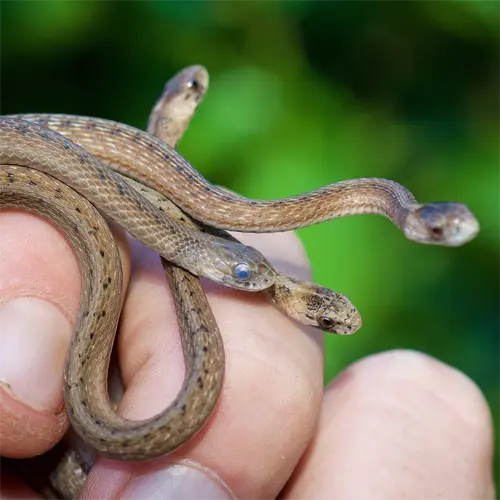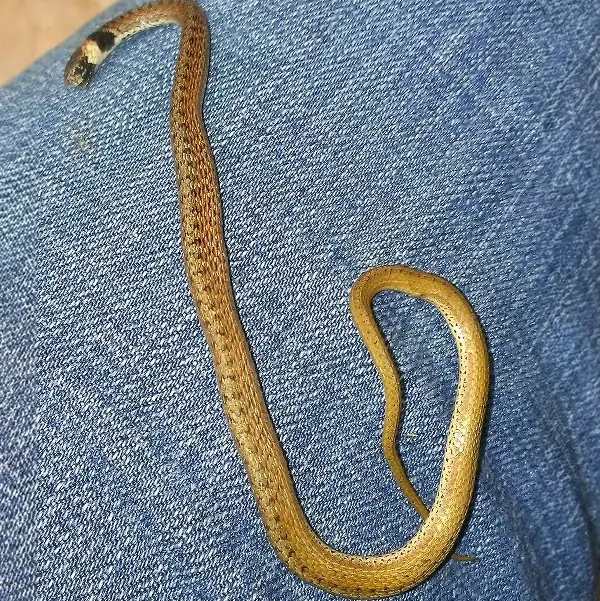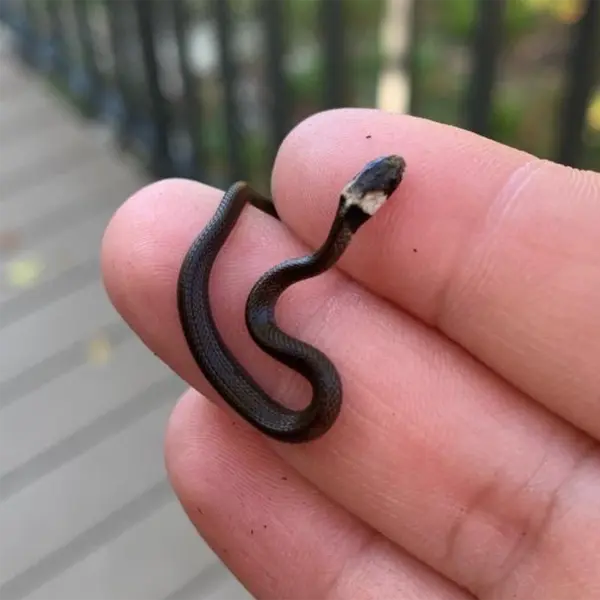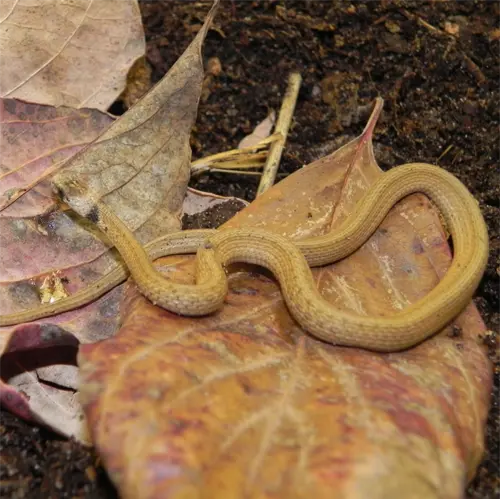Florida Brownsnake
- Scientific Name
- Storeria dekayi victas
- Also Known As
- Florida Brown Snake
- Range
- All of Florida except the Panhandle
- Diet
- Soft-Bodied Invertabrates, Lizards, Tree Frogs
- Life Expectancy
- 7 Years
Quick Links
Florida Brownsnakes in Central Florida
The Florida Brownsnake (Storeria dekayi victa) is a small, nonvenomous colubrid snake native to Florida. Often confused with the redbelly snake (Storeria occipitomaculata), the Florida Brownsnake can be identified by its brown dorsal scales, faint lateral stripes, and reddish-orange belly. This adaptable snake thrives in urban and suburban habitats across central Florida. Read on to learn about the biology, behavior, habitat, and identification of the Florida Brownsnake, along with tips for coexistence and prevention of accidental encounters.
Appearance and Identification
The Florida Brownsnake can be distinguished from look-alike species by the following characteristics
Maturation Rate
Florida Brownsnakes grow rapidly, reaching sexual maturity within their first or second year. They reach adult size after two to three years.
Habits and Behavior
The Florida Brownsnake is terrestrial, fossorial, and active during the day (diurnal), especially in the morning and evening. It shelters underground or under rocks, logs, leaf litter, and other debris. When threatened, it may vibrate its tail and release a foul musk from cloacal glands. This species is docile and rarely bites when handled.
Florida Brownsnakes are excellent climbers and often found on shrubs or low vegetation up to 3 feet above ground. They are quick and agile, allowing them to hunt small prey and escape predators. During the hottest summer months, they may become inactive staying in humid shelters.
Reproduction and Lifespan
Mating occurs in March-May soon after emergence from winter dormancy. Females lay 1-2 clutches of 3-7 eggs from April to July in rotting wood, compost piles, or underground. The eggs hatch in 6-9 weeks from July to September. Florida Brownsnakes can live up to 7 years in the wild.
Ideal Habitat and Range
The Florida Brownsnake thrives in the warm, humid climate of central Florida which lacks extended freezing weather. Average temperatures range from the 60s°F (15-20°C) in winter to over 80°F (27°C) in summer. Annual rainfall averages 50+ inches.
Natural habitats include pine flatwoods, scrub, hardwood hammocks, and wetlands. But Florida Brownsnakes readily adapt to disturbed areas like parks, gardens, and suburbs, taking shelter in leaf litter, compost piles, flower beds, and building foundations. Abundant insects, worms, and small vertebrates provide ample prey.
Diet and Feeding
Florida Brownsnakes are carnivores feeding mainly on soft-bodied invertebrates like earthworms, slugs, snails, and insect larvae. They also eat small lizards, tree frogs, smaller snakes, nestling mice, and occasionally eggs.
They use visual and chemical cues to hunt prey on the ground and low vegetation. When hunting, the Florida Brownsnake flicks its tongue rapidly to detect chemical trails. Once prey is pinpointed, the snake uses jaws and teeth to seize and swallow the prey whole. They hunt during daytime hours when prey is active.
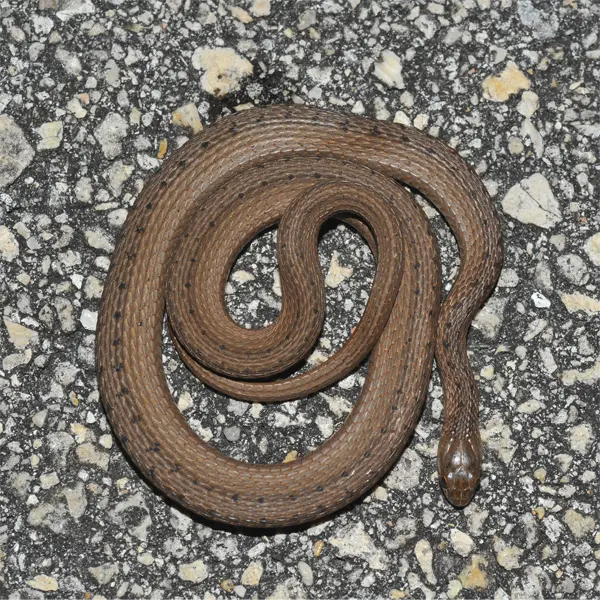
Photo 56087614 © Wayne Fidler, CC BY-NC

Common Health Risks
Florida Brownsnakes are nonvenomous and considered harmless to humans. Their small size prevents them from consuming prey larger than nestling rodents. Their teeth are adapted for grasping slippery prey rather than injecting venom.
Musk and defecation are their primary defenses against predators. Florida Brownsnakes help control pest populations and are beneficial in gardens. They pose no health risks if left undisturbed. Bites may cause minor bleeding but are not medically significant.
Preventing Florida Brownsnakes Encounters
Florida Brownsnakes naturally avoid humans if given space and escape routes. To prevent accidental encounters:
- Keep yards free of heavy debris piles where snakes shelter.
- Avoid reaching into crevices in rock walls, compost bins, etc without looking first.
- Wear sturdy gloves and boots when digging in soil or compost.
- Supervise small children and pets outdoors.
- Seal foundation cracks, and install door sweeps to prevent entry.
- Gently guide stray snakes outdoors using a broom and bucket.
- Trim vegetation back from homes to reduce shelter opportunities.
Florida Brownsnakes in Central Florida – Conclusion
The Florida Brownsnake is a harmless, beneficial native species playing an important ecological role. They thrive in Florida’s suburban and urban habitats. With proper precautions, encounters can be avoided. If they do occur, remain calm and allow the snake to retreat – they ultimately want to escape, not interact with people.
Although small, the Florida Brownsnake is a key component of the food web, preying on pest insects, worms, and rodents. Through coexistence and prevention of accidental meetings, this docile snake can safely share our living spaces.

